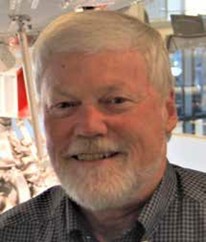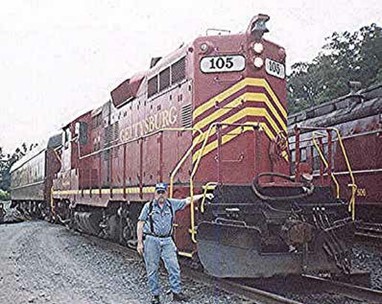June Clinic – June 16, 2025
Capturing the Character of Trinidad, CO. – 1953
Glenn Gibson Biography

Glenn was born in Dallas, Texas, but grew up in the small town of Plattsburg, Missouri, just outside of Kansas City. Glenn’s dad was the International Harvester dealer there, which provided Glenn with summer employment during his teenage years – mostly working the parts counter, but also performing some character-building activities like sweeping out the shop and occasionally helping unload farm equipment from a flat car at the town team track. Glenn attended the University of Kansas in Lawrence, receiving his Bachelor’s and Master’s degrees in Aerospace Engineering. Following college, Glenn went to work at McDonnell Douglas in St. Louis, Missouri. There he met and married Jane, who for some unfathomable reason is still with him after more than 43 years. In 1979, Glenn & Jane moved to Denver, and Glenn went to work for Martin Marietta. Glenn spent many years performing shock, vibration, acoustic, and loads analyses for various rocket programs with Martin Marietta/Lockheed Martin/United
Launch Alliance. He wrapped up his career as an integration manager responsible for ensuring that NASA and Air Force spacecraft were mechanically, electrically, environmentally, and functionally compatible with Atlas and Delta launch vehicles. Glenn participated in rocket launches from both Cape Canaveral Air Force Station and Vandenberg Air Force Base. Probably the most exciting (and nerve-wracking) was NASA’s Mars Science Laboratory mission, which placed the Curiosity Rover on Mars. Following retirement, Glenn & Jane moved from Conifer down to Lakewood, and Glenn became a member of the Front Range Division of the NMRA, and the Lockheed Martin model railroad club. In addition to model railroading, Glenn enjoys taking classes on a wide range of topics through Osher Lifelong Learning Institute (OLLI) at DU, and he and Jane will continue traveling.
Glenn Gibson will discuss how he has attempted to capture the character of Trinidad in a small corner of his HO scale AT&SF Trinidad & Raton Pass layout, which is set in 1953. The area of concentration is Commercial Street near the Purgatory River and the Santa Fe tracks and station. The chosen area has an eclectic mixture of commercial buildings, hotels, bars, cafes, warehouses, and repair shops. He has mainly utilized commercially available materials and structures, modifying and kitbashing them as needed to get the look desired and to fit into the space available. A mirror was used to expand the space, and he will “reflect” on the pros and cons of using that method. His review will include modeling the river and the Commercial Street bridge.
July Clinic – July 21, 2025
Capturing Night Scenes
Ashley Webb Biography

Ashley received her BA in History and Anthropology from Longwood University, in Farmville, Virginia, and her MA in Museum Studies from Bournemouth University, in Dorset, England. She is currently the Executive Director & Curator of Collections and Exhibitions with the Historical Society of Western Virginia, which operates both the Roanoke History and the O. Winston Link Museums. In addition to her job with the Historical Society, Ashley works with several Roanoke, Virginia, area museums as a contract museum collections specialist and guest curator. Her specialty is fashion history, and she owns Bustle Textiles – a historic dress preservation company with an emphasis on creating traveling fashion exhibitions for small museums.
Clinic On Hold – Waiting on Date
History of the Denver Tramway Streetcar .04
Wally Weart will present the above-mentioned Clinic. This was the last streetcar to operate in revenue in Denver, and it had several narrow escapes during its life. One of its escapes was the conversion from standard gauge to a narrow-gauge electric streetcar. Wally will add some history of the Denver Tramway network along with some additional pictures he has accumulated. Wally is a long-time member of the Front Range Division and the NMRA.
